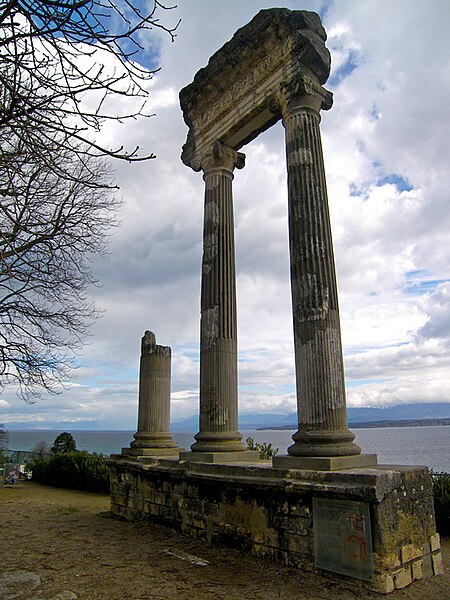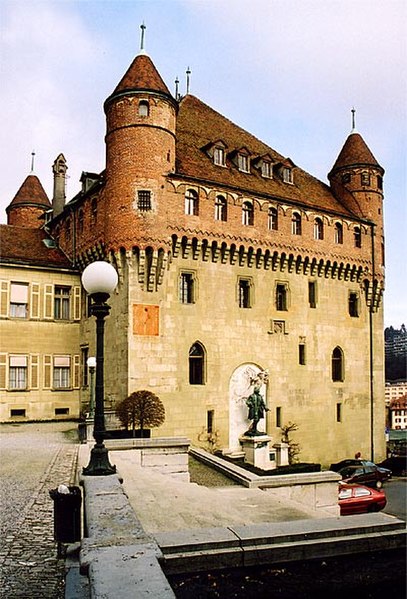The Barony of Vaud was an appanage of the County of Savoy, corresponding roughly to the modern Canton of Vaud in Switzerland. It was created by a process of acquisition on the part of a younger brother of the reigning count beginning in 1234 and culminated in the formalisation of its relationship to the county in 1286. It was semi-independent state, capable of entering into relations with its sovereign, the Holy Roman Emperor, and of fighting alongside the French in the Hundred Years' War. It ceased to exist when it was bought by the count in 1359. It was then integrated into the Savoyard state, where the title Baron of Vaud remained a subsidiary title of the heads of the family at least as late as the reign of Charles Albert of Sardinia, although the territory of the barony was annexed by the Canton of Bern during the Protestant Reformation (1536).
Castle at Morges, seat of baronial administration
Peter, first Savoyard ruler of Vaud, extended his protection as far as Bern, where he is shown here greeting the citizens after their construction of a new bridge over the Aar.
Vaud ,(German; Kanton Waadt) more formally the canton of Vaud, is one of the 26 cantons forming the Swiss Confederation. It is composed of ten districts, and its capital city is Lausanne. Its coat of arms bears the motto "Liberté et patrie" on a white-green bicolour.
Roman column in Nyon
Built by the Bishop of Lausanne during the 15th century, Château Saint-Maire has been the seat of the cantonal government since 1803
Vevey, Lake Geneva, and the Swiss Alps
Vallée de Joux, Jura






